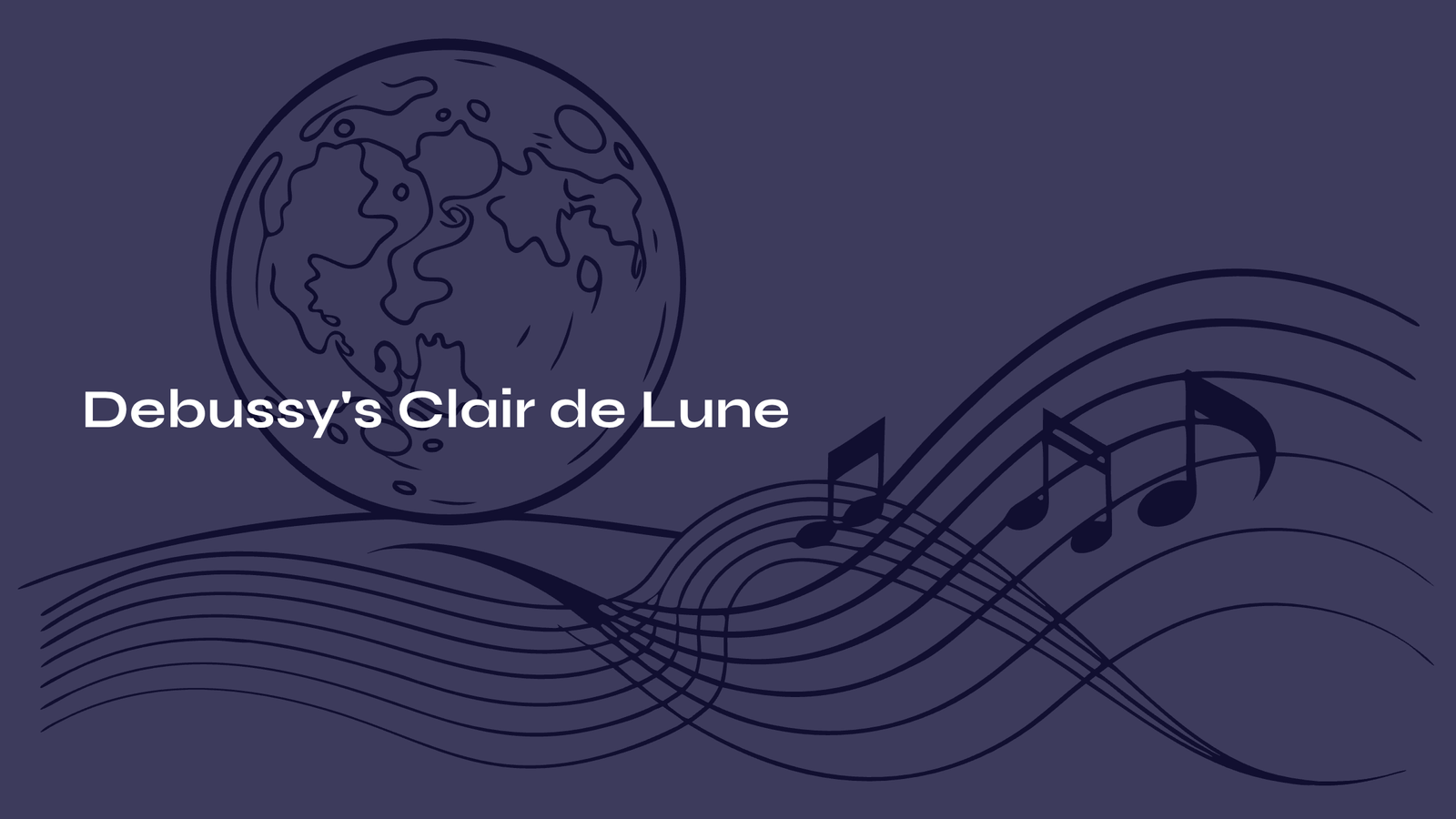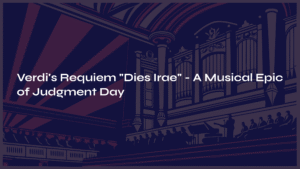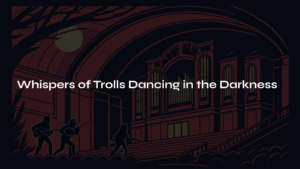Table of Contents
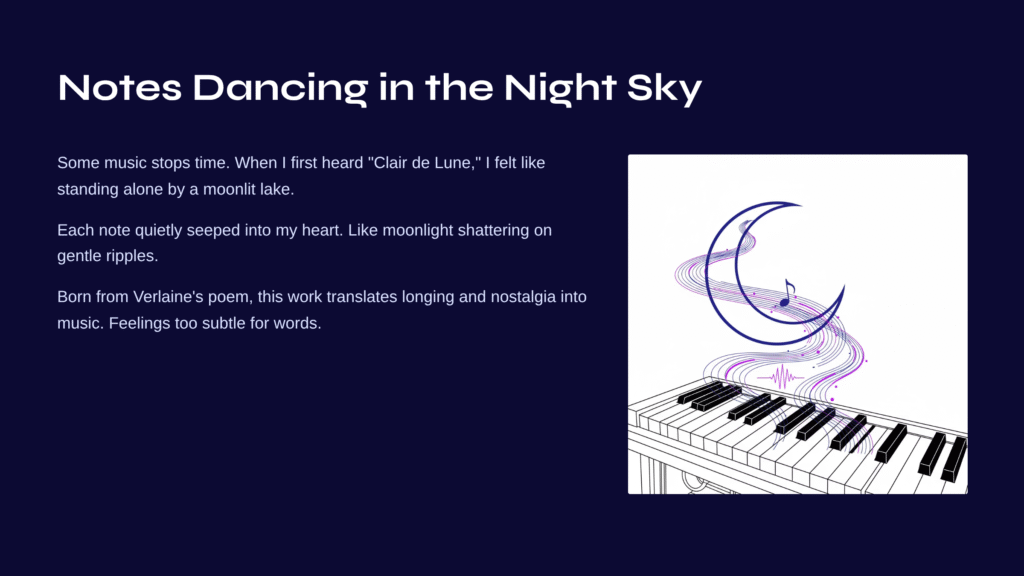
Notes Dancing in the Night Sky
Some music stops time. When I first heard Debussy’s “Clair de Lune,” I felt as though I were standing alone by a lake in the depths of night. Like those moments when moonlight shatters and sparkles on gentle ripples, each note of this piece quietly seeped into somewhere deep within my heart.
Born from inspiration drawn from Verlaine’s poem “Clair de Lune,” this work is not merely a depiction of a nocturnal scene. It is a miraculous piece that translates the longing, nostalgia, and delicate emotions that lie hidden within our inner selves into the language of music—feelings too subtle for words.
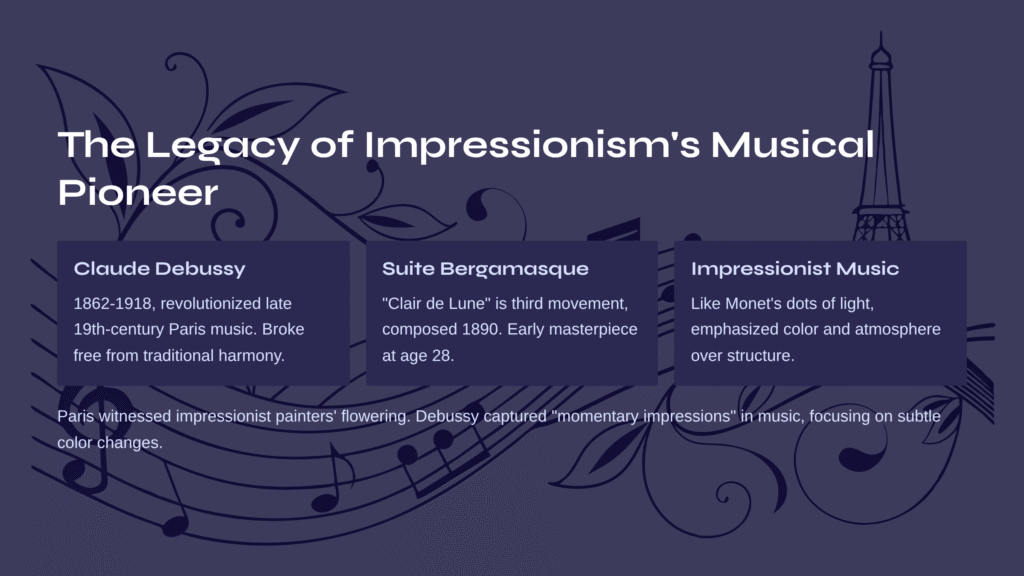
The Legacy of Impressionism’s Musical Pioneer
Claude Debussy (1862-1918) was a composer who revolutionized the musical world in late 19th-century Paris. Breaking free from traditional harmony and form, he pioneered the path of impressionist music that emphasized color and atmosphere. Just as Monet painted landscapes by placing dots of light and color on canvas, Debussy discovered new methods of expression in music.
“Clair de Lune” is the third movement of the “Suite Bergamasque,” composed in 1890. This suite, completed when Debussy was 28 years old, is considered one of his early masterpieces. “Clair de Lune” in particular became the most beloved piece of the entire suite, remaining a cherished repertoire for both classical music newcomers and experts to this day.
Paris at that time was witnessing the flowering of impressionist painters’ new visual arts. Within this artistic atmosphere, Debussy sought to capture “momentary impressions” in music as well. While traditional classical and romantic music emphasized clear structure and dramatic development, Debussy’s impressionist music focused on subtle changes in color and delicate transitions in atmosphere.
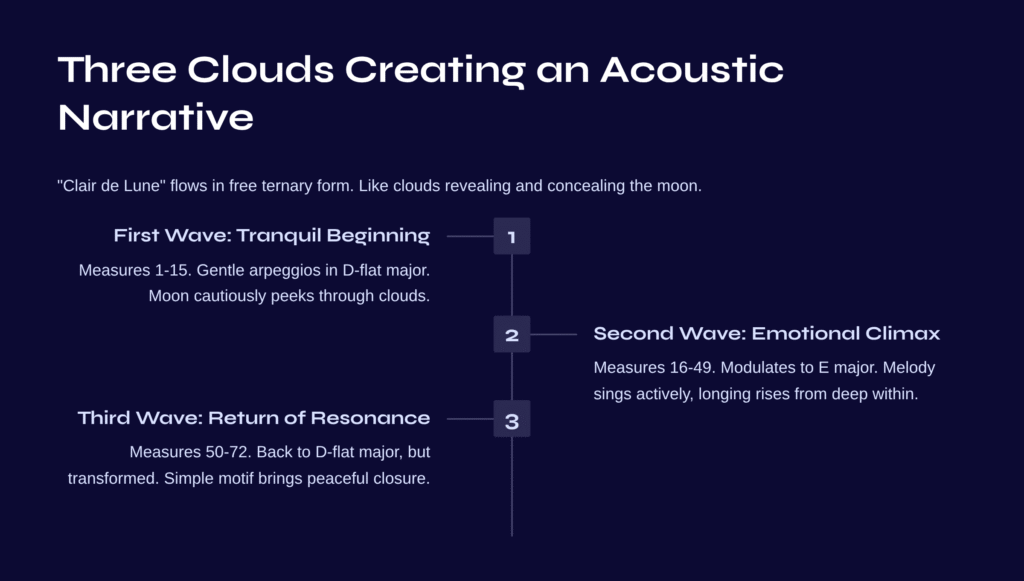
Three Clouds Creating an Acoustic Narrative
“Clair de Lune” is structured in a free ternary form (A-B-A’) overall, yet it doesn’t confine itself to traditional formal constraints. Like clouds alternately concealing and revealing the moon, three great currents flow together naturally.
First Wave: Tranquil Beginning (Measures 1-15)
The piece opens with gentle arpeggios in D-flat major. The left hand’s low notes lay a foundation like the bottom of a calm lake, while the right hand’s melody quietly emerges above. How can I describe this moment’s feeling? It’s as if the moon in the night sky cautiously peeks its face through the clouds.
Particularly noteworthy are the parallel fifths and octaves Debussy employed. These progressions, forbidden in traditional harmony, actually create a dreamlike and mysterious atmosphere. This produces an effect like paint spreading naturally across water, allowing the notes to flow organically.
Second Wave: Emotional Climax (Measures 16-49)
The middle section modulates to E major, shifting to a brighter and warmer atmosphere. Here, Debussy makes the melody sing more actively, like moonlight growing stronger to illuminate the surrounding landscape more clearly.
What’s especially beautiful in this section is the melody around measures 27-28. When the right hand ascends to the higher register and reaches its climax, it evokes the feeling of longing rising from deep within the heart, almost reaching the throat. Yet even here, Debussy maintains restraint. Unlike Romantic composers who might explode dramatically, he paints emotions that permeate like gentle light.
Third Wave: The Return of Resonance (Measures 50-72)
We return to the original D-flat major, but this time it’s not exactly the same as the beginning. It’s as if we’re seeing the same landscape again, but something within our hearts has changed in the meantime. The melody becomes simpler, the harmony more transparent.
In the final section, Debussy repeats the “D♭-A♭-D♭” motif, bringing the piece to a close. Each repetition of this simple motif evokes the tranquility of gentle waves reaching the shoreline and retreating again. When the final chord resonates, we experience the afterglow in complete silence.
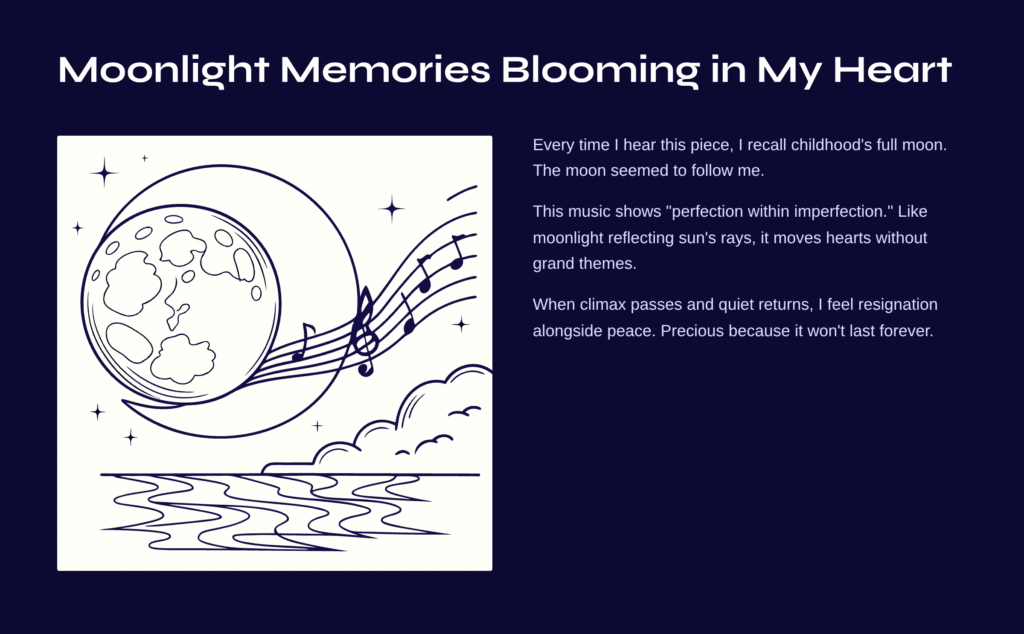
Moonlight Memories Blooming in My Heart
Every time I hear this piece, I recall the full moon I gazed up at from my grandmother’s garden as a child. Back then, I wondered why the moon seemed to follow me, but now I understand it wasn’t mere optical illusion but a sense of cosmic connection. The emotion Debussy’s “Clair de Lune” evokes is similar.
This music shows us “perfection.” But it’s not a flashy or grandiose perfection. Rather, it’s perfection found within imperfection, fullness discovered within emptiness. Just as the moon cannot emit its own light yet illuminates the night by reflecting the sun’s rays, this music deeply moves our hearts without grand themes or complex techniques.
Especially when the melodic climax of the middle section passes and the music returns to its quiet atmosphere, I always feel a certain resignation alongside peace. It’s the emotion of accepting that “this moment won’t last forever” while realizing that “precisely because of this, it becomes more precious.”
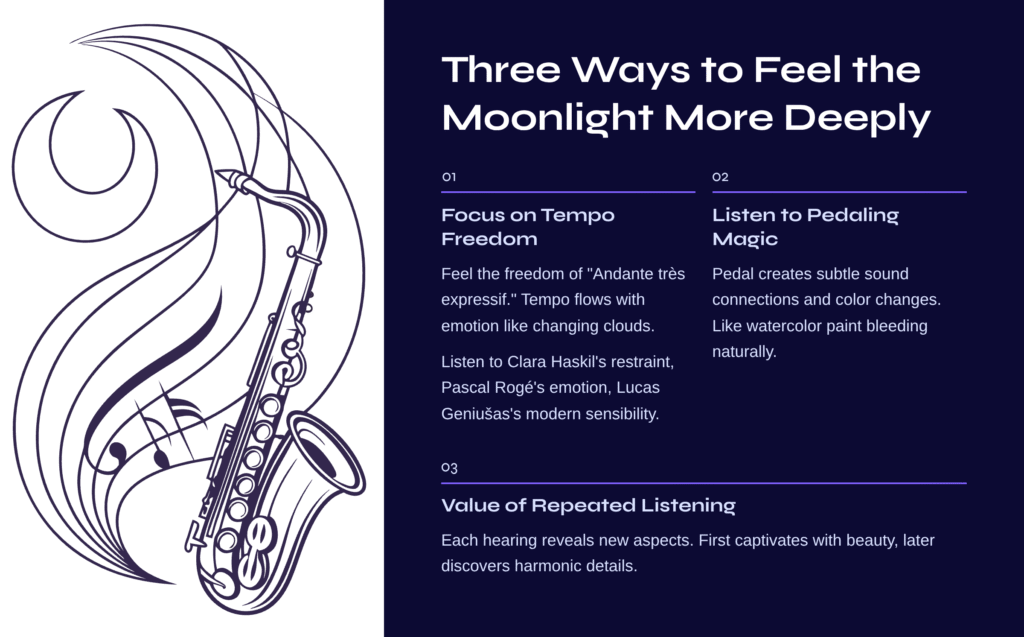
Three Ways to Feel the Moonlight More Deeply
First Method: Focus on Tempo Freedom
The most important aspect when appreciating “Clair de Lune” is feeling the freedom of tempo. While Debussy marked the score “Andante très expressif” (moderately slow and very expressive), the tempo actually flows freely according to the performer’s interpretation. Like clouds changing shape with the wind, this piece’s tempo also shifts with emotion.
To find good performances, it’s worth listening to versions by various pianists. Clara Haskil’s transparent and restrained interpretation, Pascal Rogé’s colorful and emotional performance, or Lucas Geniušas’s recent interpretation with its modern sensibility—each offers different charms.
Second Method: Listen to the Magic of Pedaling
In piano performance, the use of the pedal is particularly important in Debussy’s music. In “Clair de Lune,” the pedal goes beyond simply sustaining notes to create subtle connections between sounds and color changes. If you listen carefully, you can feel the acoustic changes when the pedal is depressed and released. This is like the effect of paint bleeding in watercolor painting.
Third Method: The Value of Repeated Listening
“Clair de Lune” reveals new aspects with each repeated listening. In the first hearing, you’re captivated by the overall atmosphere and beauty, but with multiple listenings, you begin to discover detailed harmonic progressions and subtle melodic changes. There’s particular joy in finding the subtle differences when the A section returns.
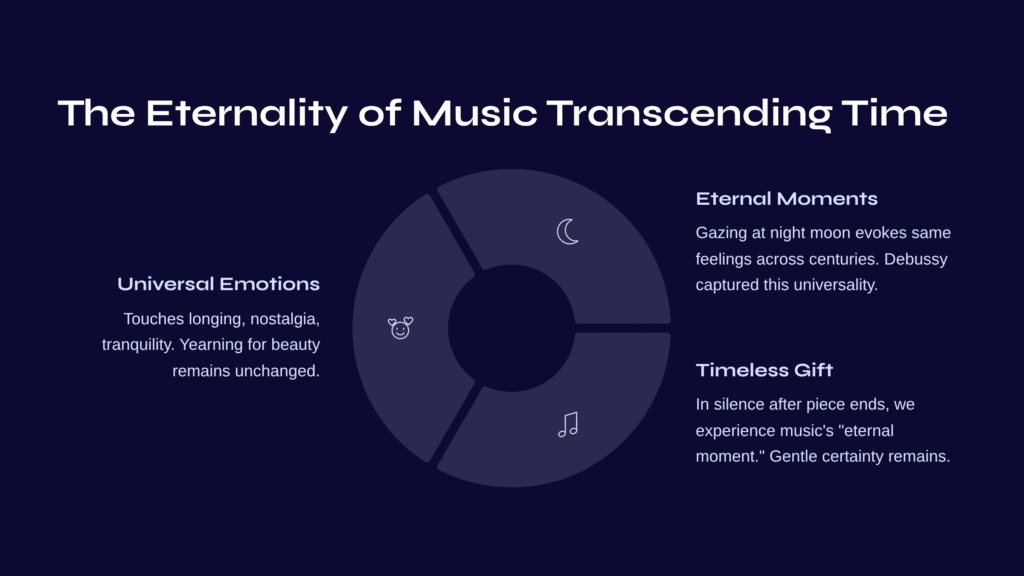
The Eternality of Music Transcending Time
Why does Debussy’s “Clair de Lune” continue to be beloved after more than a century? It’s because this music touches humanity’s most universal emotions—longing, nostalgia, tranquility, and the yearning for beauty.
Even as technology advances and the world changes rapidly, the emotions we feel when gazing up at the moon in the night sky remain largely unchanged. Debussy captured precisely these eternal human emotions through the temporal art of music. That’s why every time we listen to “Clair de Lune,” we encounter some universal beauty that transcends time and space.
In the silence that follows this piece’s end, we experience the “eternal moment” created by music. And in that moment, we feel that something as gentle yet certain as moonlight remains within our hearts. Isn’t this the gift that true music offers us?
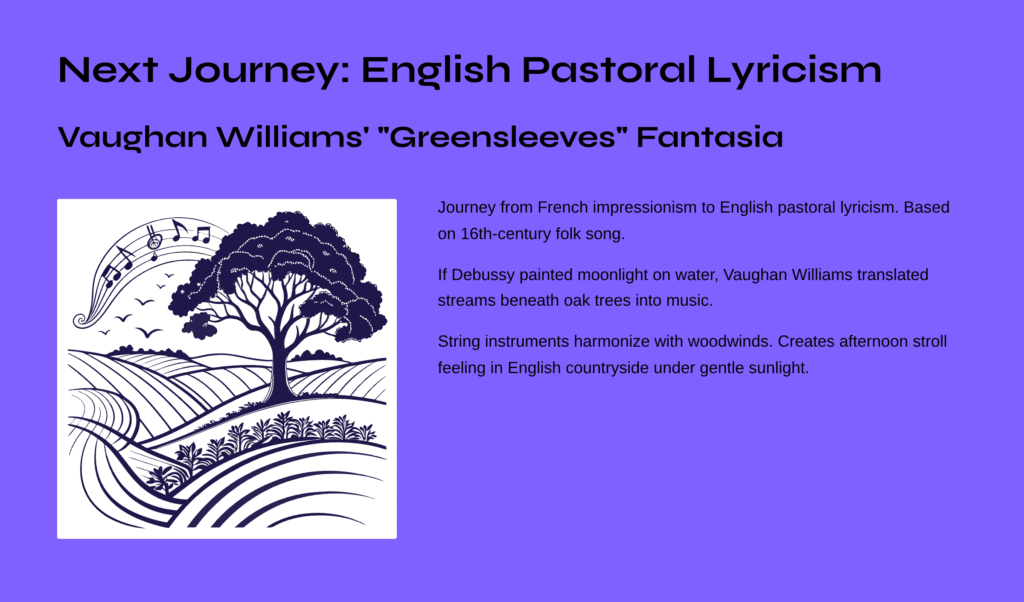
Next Journey: English Pastoral Lyricism – Vaughan Williams’ “Greensleeves” Fantasia
How about embarking on a journey from Debussy’s French impressionism to English pastoral lyricism? Ralph Vaughan Williams’ “Fantasia on Greensleeves” is an orchestral work based on a 16th-century English folk song that offers a different charm from “Clair de Lune.”
This work depicts the beauty of the English countryside through its poignant and pastoral melody. If Debussy painted the shimmer of moonlight on water, Vaughan Williams translated the sound of streams flowing beneath oak trees on green hills into music. The warm tones of string instruments harmonize with the gentle melodies of woodwinds, creating the feeling of taking an afternoon stroll in the English countryside under gentle sunlight.
Particularly captivating is the process by which the main theme becomes increasingly rich as it’s varied through different instruments, showing how the same landscape can appear different depending on time and perspective. If you wish to move away from “Clair de Lune’s” gentle personal reflection toward something warmer and more embracing, this piece would be the perfect next destination.
